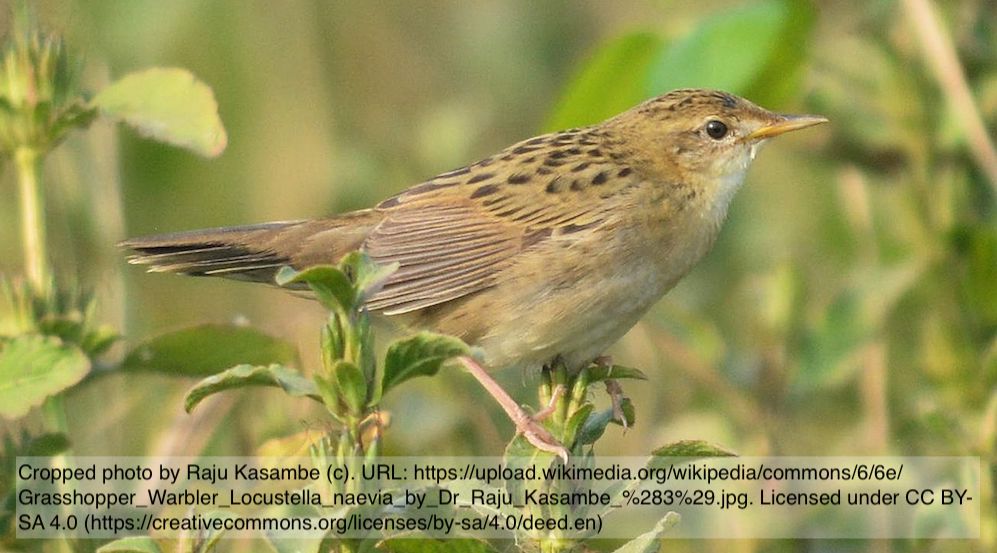Territory occupation sequence and population change 2005–2019 in a satellite versus core area for Grasshopper Warblers Locustella naevia
DOI:
https://doi.org/10.34080/os.v34.22262Keywords:
breeding ecology, habitat quality, territory selection, population decline, long-term survey, PasseriformesAbstract
Because of habitat preferences and variation at a landscape level, a species’ distribution tends to show a level of aggregation. In the Grasshopper Warbler Locustella naevia, the distribution is linked to suitable breeding habitats of open grassy and herbaceous grounds, often adjacent to water. Consequently, the presence of the Grasshopper Warbler at landscape level will consist of core and satellite areas. In theory, birds can sense habitat quality and should occupy territories within those areas based on territory quality. It might also result in different population trends between different areas in the landscape. I tested these assumptions through a 15-year study in a satellite area, comparing the results to a nearby core area. In both areas, the males occupy a territory based on the perceived attractiveness, and general patterns of the territory utilization were similar between areas. Territory density was lower and the males arrived later in the satellite area, thereby confirming the satellite/core area relationship between the study areas. In the core area, no significant change in population size was noted, while in the satellite area, the population decreased significantly.Downloads
References
Andrén H. 1994. Effects of habitat fragmentation on birds and mammals in landscapes with different proportions of suitable habitat: a review. Oikos 71: 355–366. DOI: https://doi.org/10.2307/3545823
Bensch S & Hasselquist D. 1991. Territory infidelity in the polygynous great reed warbler Acrocephalus arundinaceus: the effect of variation in territory atractiveness. Journal of Animal Ecology 60: 857–871. DOI: https://doi.org/10.2307/5418
del Hoyo J, Elliott A & Christie DA (eds). 2006. Handbook of the birds of the world. Vol 11. Old world flycatchers to old world warblers. Lynx Edicions, Barcelona.
Engzell J. 1996. Amphibian habitat choice, predation and a arent competition in Lertaget. Graduation work for Master Exam in Biology. University of Göteborg, Department of Zoology. 20p.54
Engzell J. 2017a. Are there more ground-dwelling invertebrates inside than outside Grasshopper Warbler Locustella naevia territories? Ornis Svecica 27: 10–12. DOI: https://doi.org/10.34080/os.v27.19549
Engzell J. 2017b. In the Grasshopper Warbler Locustella naevia, males with better nutritional condition at the winter ground arrive earlier than other males at the breeding ground. Ornis Svecica 27: 139–143. DOI: https://doi.org/10.34080/os.v27.19567
Engzell J & Waern H. 2005. Inventering av Björka och Vissberga lertag 1997–2005. Fåglar i Närke 28: 8–15.
Gilbert G. 2012. Grasshopper Warbler Locustella naevia breeding habitat in Britain. Bird Study 53: 303–314. DOI: https://doi.org/10.1080/00063657.2012.672400
Green M, Haas F & Lindström Å. 2022. Monitoring population changes of birds in Sweden. Annual report for 2021. Department of Biology, Lund University. 89

Downloads
Published
How to Cite
Issue
Section
License
Copyright (c) 2024 Jonas Engzell

This work is licensed under a Creative Commons Attribution 4.0 International License.
The copyright of each contribution belongs to the author(s), but all contributions are published under a Creative Commons license, so that anyone is free to share and reuse the contribution as long as the copyright holder is attributed.







